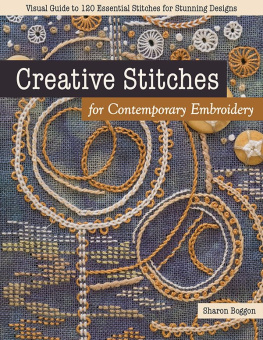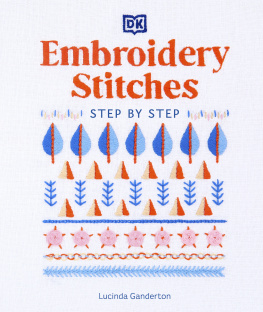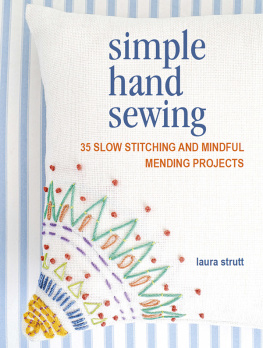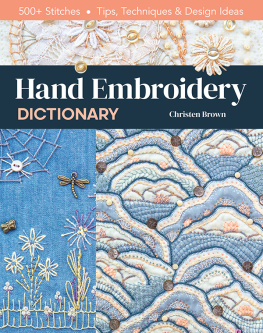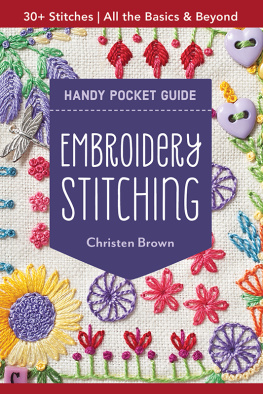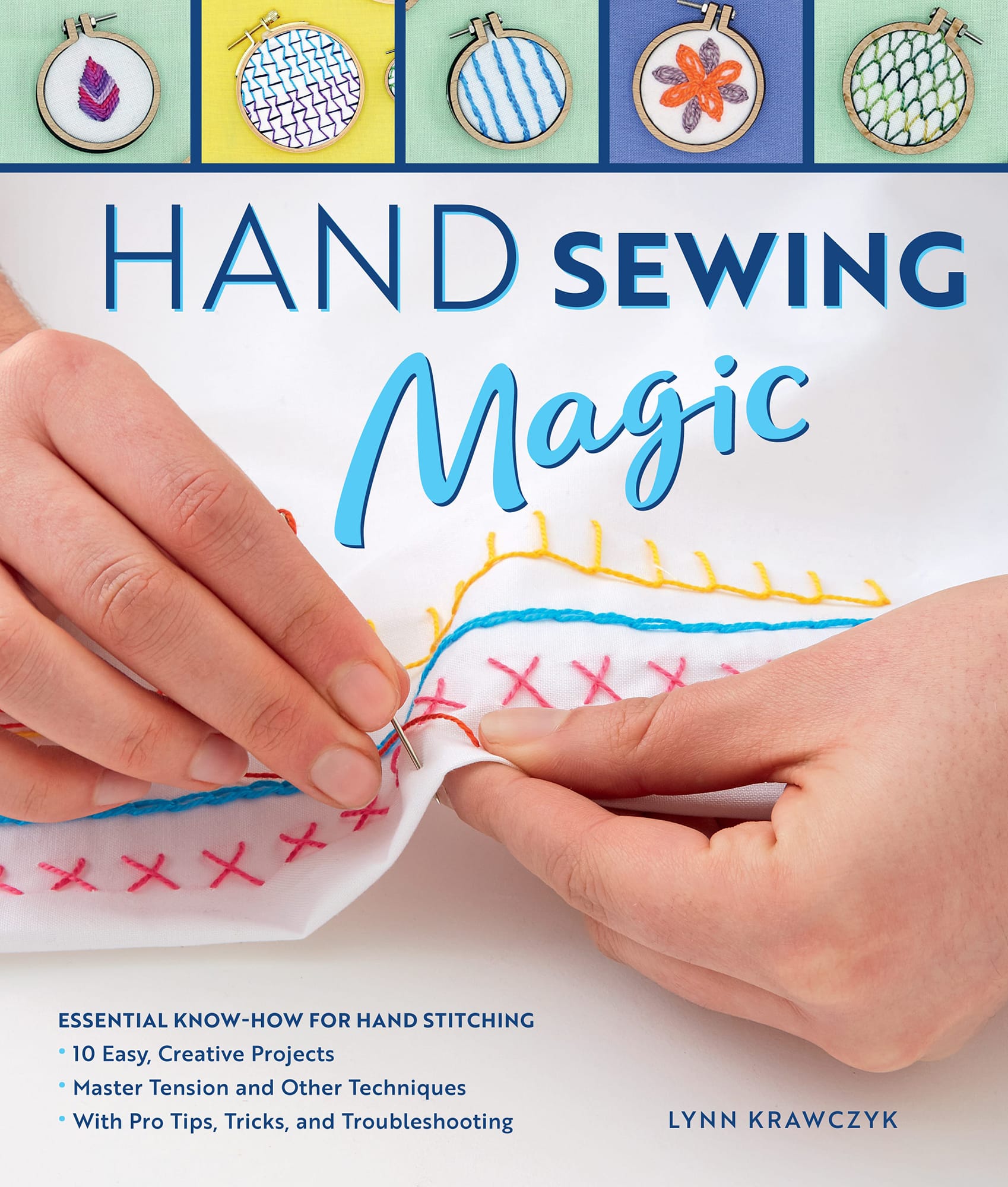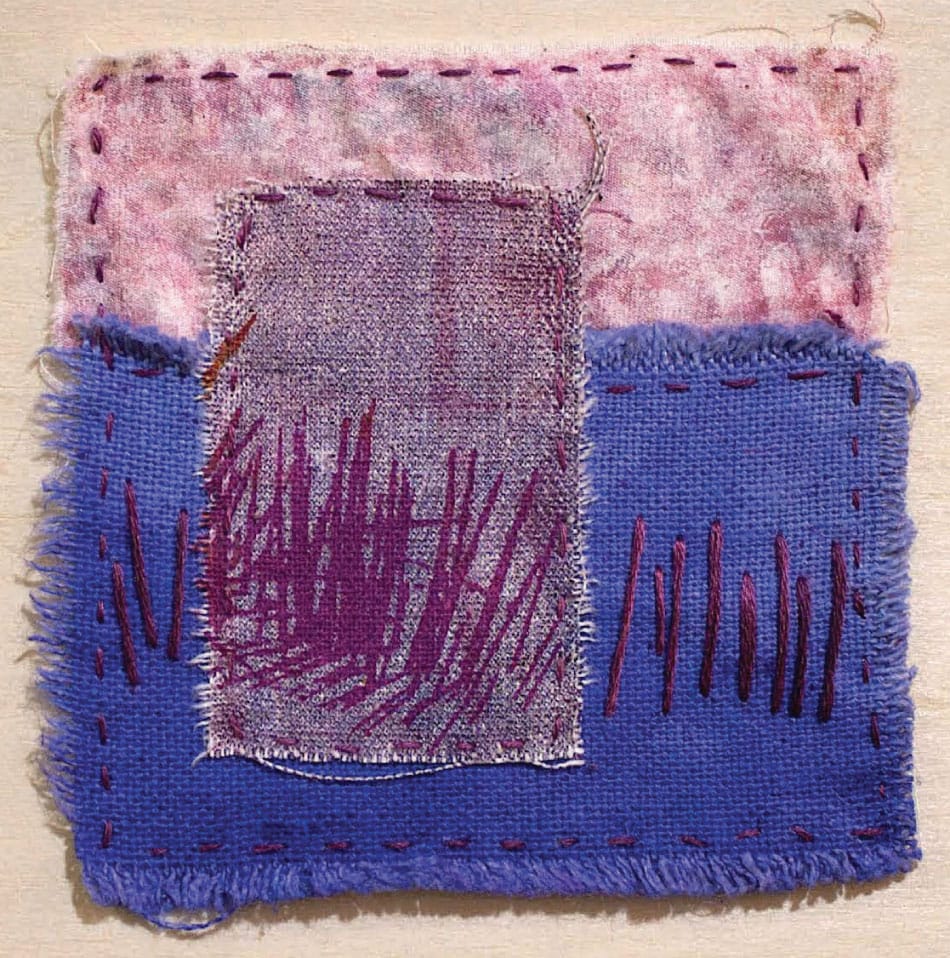Contents
Guide
HAND
SEWING
Magic
ESSENTIAL KNOW-HOW FOR HAND STITCHING
With Pro Tips, Tricks, and Troubleshooting
Master Tension and Other Techniques
10 Easy, Creative Projects
LYNN KRAWCZYK

Preface
WHY STITCH BY HAND?
This question always comes up in conversation when Im chatting with other textile artists. There is a mild sense of disbelief that someone would choose the time-consuming methods of hand stitching when other speedier options are available.
I understand, I really do. Sometimes, you just need to get stuff done. But when it comes to this particular topic, I stand firm in my love and admiration for the craft of hand stitching.
I didnt find art until I was in my mid-twenties, and one of the first things I learned was how to manipulate needle and thread to create pattern on fabric as well as for construction of projects. There is a kind of deep pride that comes with having a skill that can both build the basics and make things pretty.
I stitch by hand because when I do, I feel most connected to my artist soul. Its a direct line to the way I like to work in my creative world, feels more personal, and helps me slip into that zone of making where time doesnt exist.
Stitching by hand will always have imperfections when compared with stitching done by a machine. Thats part of its charm for me. Its about the doing and loving what you are makingno matter what kind of little glitches might sneak their way in.
If you are new to hand stitching, I hope this book will help introduce you to this art form that has existed for centuries. If you are a seasoned stitcher, I hope the ideas you find here will help push your imagination toward things you hadnt considered before.
SLOW STITCHING MANIFESTO
You may have heard the term slow stitching. If you dont know what its about, let me explain. Slow stitching begins with the overall theme of working with more intention and enjoying the process. So often, we try to rush through our projects to get to the end. Slow stitching is about taking your time and allowing yourself to bond emotionally with your work.
As a maker of handmade things, it can be easy to be overly critical of your work. I wish I could say I never fall victim to that kind of thinking, but its happened on more than one occasion and I expect its just part of the process of making things.
Pro Tip
LIZ KETTLE
Expression, not perfection! This is my guiding philosophy when it comes to hand stitching and life. A few years ago, I was handed an unheard-of and unpronounceable diagnosis with instructions to change everything in my life, starting with stress reduction.
I began a journey into meditation but always felt I was a complete failure at it. I knew I wasnt doing it right and I couldnt stick with it. Meditation was causing me more stress! Then one day, I created Stitch Meditation.
It is a daily creative and mindful practice where I stitch a 4-inch (10 cm) square textile collage. There are very few rules for these Stitch Meditations and the most important one is Dont take any stitches out! This rule allows me to focus on the beautiful whole rather than the imperfect one. As a result, my work has become much more free, experimental, and expressive.
Website: www.textileevolution.com
Early on in my stitching career, I decided that I needed to shift my mind-set to minimize that little voice that points out every flaw. I didnt want it to be the focus of my work or to steal my joy from the process. I wrote myself a little manifesto with all my declarations about my love for Slow Stitching and printed it out to hang on my wall. I share it here, should you need a little help silencing your inner critic.
I love the feel of thread and fabric in my hands.
I love the fluidity of my creative mind, allowing it to control the direction of my stitching as the project evolves.
I believe that all handmade items bear the memories and emotions of their makers.
I believe that work made by hand has a preciousness that can be felt the moment it is held.
I see my work as an extension of my ideas and thoughts.
I see my work as a way to create a lasting connection between myself and future stitchers.
I promise not to rush through my work.
I promise to reserve judgment as I work, to understand that imperfection is part of the soul of handwork.
1
The Hand Stitchers Toolkit
As with every activity, you will find the tools that suit your personal sensibilities. However, there are some basics that cant be avoided. This chapter will help you get a good foundation for the materials and supplies that make hand stitching a breeze.

THREAD
Needless to say, thread is one of the main elements of hand stitching. Just as a painter can choose from acrylic, oil, or watercolor paints, stitchers have a wide variety of thread types to choose from as well. Its incredibly exciting to try them out, but it can also be overwhelming, so we are going to take a close look at exactly what embroidery thread is and what fibers can be used to make it.
What Is Embroidery Thread?
Embroidery thread is simply defined as yarn that is spun specifically for the use of embroidery and needlework. When you hear the word yarn it may seem confusing, but all it means is that the fibers are made into embroidery thread using the same techniques that yarn is made fromspinning and plying.
The raw fiber is spun into a single thread. The threads are then twisted together with varying numbers of strands to create the desired weight. The thread will also be dyed and some threads may be treated with specific chemicals to acquire a unique characteristic.
Types of Embroidery Thread
We are going to examine five different groups of threads and what makes them special.
Disclaimer: The threads shown in the photos are from my personal stash. Ive been collecting for a couple of decades. This is the long way of saying that I know the manufacturers of some threads and the labels of others have long gone to thread heaven. I will identify brands where I am sure of them to give you a reference should you like the looks of them.
COTTON
Cotton embroidery thread is one of the most commonly found types of thread. I use this thread a lot in my work because its affordable and easy to find, and I like the dimension that the thicker sizes lend to my stitching.
This type of thread is often mercerized. This is accomplished by treating the thread with caustic alkali to increase its strength and give it a shiny appearance. The smoothness this process lends to the thread makes it especially nice to stitch with.
When a size number appears next to the thread, it indicates the thickness. Size 3 is the largest thread and size 12 is the thinnest thread in the group shown. The higher the number, the thinner the thread.


